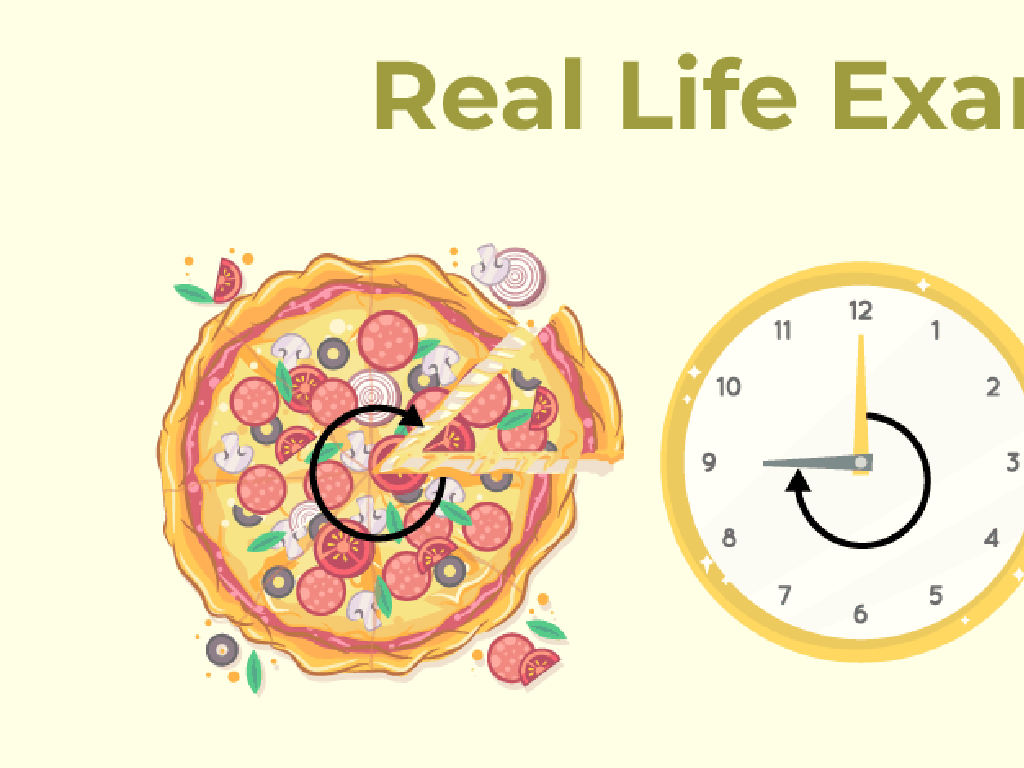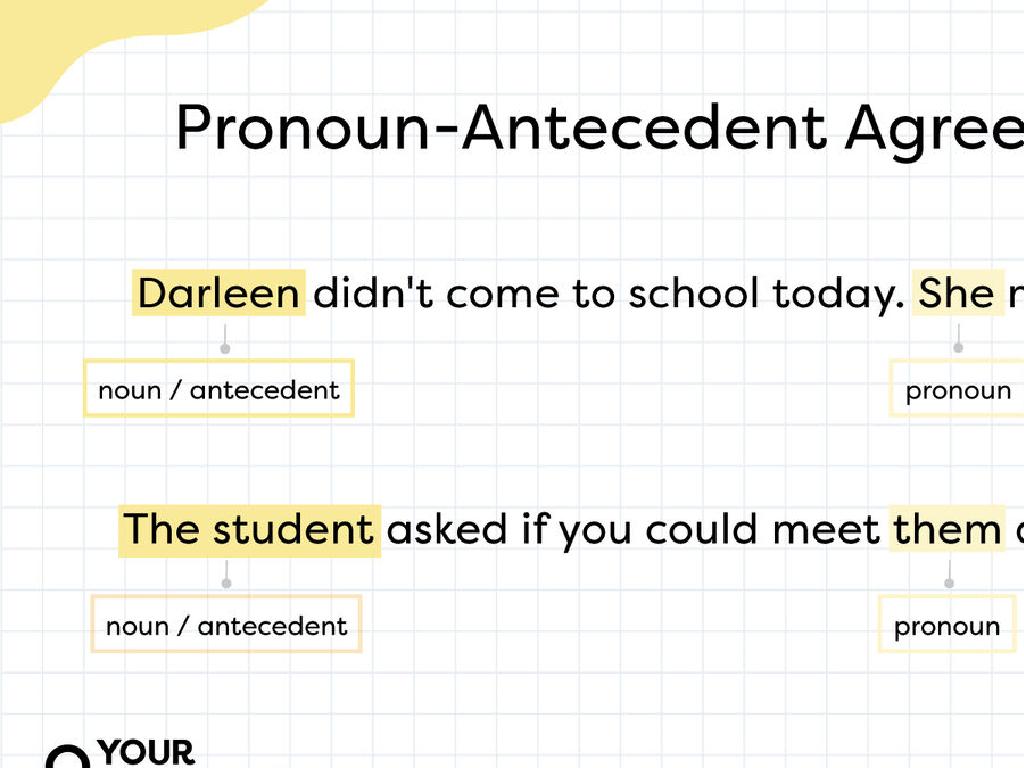Use Punnett Squares To Calculate Probabilities Of Offspring Types
Subject: Science
Grade: Seventh grade
Topic: Genes To Traits
Please LOG IN to download the presentation. Access is available to registered users only.
View More Content
Introduction to Genetics: The Foundation
– Exploring heredity basics
– Heredity is how traits are passed from parents to offspring.
– Genes and traits defined
– Genes carry instructions for traits, which are inherited features like hair color.
– Meet Gregor Mendel
– Known as the Father of Genetics for his work with pea plants.
– Significance of Mendel’s work
– Mendel’s principles form the basis of genetic inheritance understanding.
|
This slide introduces students to the fundamental concepts of genetics, starting with heredity the process by which parents pass traits to their offspring. It’s crucial to define genes as the units of heredity that determine the traits, which are the characteristics we can observe, such as eye color or height. Introduce Gregor Mendel, a scientist who discovered the basic principles of heredity through experiments with pea plants. His work laid the groundwork for modern genetics, including the use of Punnett squares to predict genetic outcomes. Encourage students to appreciate the historical context of Mendel’s discoveries and how they revolutionized our understanding of biology.
Understanding Punnett Squares
– Define Punnett Square
– A chart used to predict the outcome of a particular genetic cross.
– Predicting offspring traits
– It shows how genes from parents can combine in offspring.
– Key terminology in genetics
– Genotype: genetic makeup; Phenotype: physical traits; Allele: gene variant; Dominant/Recessive: gene expression.
– Practical application in genetics
– Use to determine the probability of an offspring having a particular genotype and phenotype.
|
This slide introduces the concept of Punnett Squares and their role in genetics. A Punnett Square is a visual tool that helps predict the genetic makeup of offspring from parental genes. It’s essential for understanding how traits are passed down and the likelihood of different genotypes and phenotypes. The terminology section is crucial for students to grasp the basics of genetic language, such as alleles, which are different forms of a gene, and how dominant and recessive genes affect the appearance of traits. Encourage students to familiarize themselves with these terms, as they are foundational for working with Punnett Squares. The practical application of this tool is vast, including predicting the outcomes of genetic crosses in various organisms.
Creating and Interpreting Punnett Squares
– Identify parental genotypes
– Genotypes are genetic makeups, like BB, Bb, or bb
– Fill in the Punnett Square
– Place one parent’s alleles across, one down, then combine
– Interpret the results
– Analyze the genotypic and phenotypic ratios
– Predict offspring probabilities
– Use ratios to predict the chance of traits in offspring
|
This slide is aimed at teaching students how to create a Punnett Square to predict the genetic outcomes of offspring based on the genotypes of the parents. Start by explaining what genotypes are and how they determine traits. Show how to set up a Punnett Square with alleles from each parent and how to fill it in to show possible genetic combinations. Teach students to interpret the square by calculating genotypic and phenotypic ratios and to use these ratios to predict the probability of offspring having certain traits. Provide examples with simple traits like flower color or seed shape to illustrate these concepts.
Monohybrid Crosses: Predicting Offspring Traits
– Understanding single-trait crosses
– A monohybrid cross involves one trait, like flower color.
– Example: Pea plant flower color
– Mendel’s classic pea plant experiment: purple vs. white flowers.
– Calculating offspring probabilities
– Use a Punnett square to find the likelihood of each phenotype.
– Interpreting phenotype ratios
– Phenotype ratios show the chance of each trait appearing.
|
This slide introduces students to the concept of monohybrid crosses, focusing on a single genetic trait to predict the phenotypes of offspring. Start by explaining that a monohybrid cross involves one trait, which can be represented by two alleles. Use Gregor Mendel’s pea plant experiments as a classic example, discussing how he determined the patterns of inheritance for flower color. Teach students how to set up and calculate probabilities using a Punnett square, and how to interpret the resulting phenotype ratios. Emphasize that these ratios are probabilities, not certainties, and encourage students to practice with different traits to solidify their understanding.
Dihybrid Crosses: Predicting Two Traits
– Understanding dihybrid crosses
– A dihybrid cross involves two traits being studied simultaneously.
– Pea plant color & texture example
– For instance, pea plants can have purple or white flowers and smooth or wrinkled seeds.
– Calculating offspring phenotype ratios
– Use a 4×4 Punnett square to determine the ratio of possible phenotype combinations.
– Applying ratios to predict probabilities
– These ratios help us predict the chance of each phenotype appearing in the offspring.
|
This slide introduces students to the concept of dihybrid crosses, where two different traits are considered at the same time. Use the example of pea plants, which Gregor Mendel famously studied, to illustrate how flower color and texture can be inherited. Show how to set up and fill in a 4×4 Punnett square to find the ratio of possible phenotypes. Emphasize that these ratios are not guarantees but probabilities of different outcomes. Encourage students to think critically about how these probabilities can predict the variety of traits in offspring. Provide additional examples if time permits, and prepare to guide students through the process of creating their own Punnett squares during class.
Punnett Square Practice
– Solve sample problems together
– Predict offspring traits using Punnett squares
– Use the squares to see how traits like eye color could be inherited
– Discuss our findings as a class
– Share different outcomes and explain why they occurred
– Understand probability in genetics
– Probability helps us predict how likely an offspring is to inherit a trait
|
This slide is focused on engaging students with hands-on practice using Punnett squares to predict offspring traits. Start by working through sample problems as a class to ensure understanding. Then, have students apply what they’ve learned by predicting traits for various scenarios. Facilitate a class discussion where students share their results and reasoning. Emphasize the concept of probability in genetics, explaining that while Punnett squares give us expected ratios, actual outcomes may vary. Provide guidance on how to calculate the probability of inheriting a particular trait. Encourage students to ask questions and explore different genetic combinations.
Real-World Applications of Genetics
– Genetics in daily life
– Traits like eye color are inherited.
– Genetics in medicine & agriculture
– Genetics help improve crops and treat diseases.
– Ethical aspects of genetics
– Consider privacy and consequences of genetic info.
|
This slide aims to connect the theoretical aspects of genetics with practical applications that impact our daily lives. Genetics is not just about heredity and traits passed down in families, but it also plays a crucial role in medical advancements and agricultural improvements. For instance, understanding genetics allows for the development of better crops that are more resistant to diseases and pests, and it enables personalized medicine where treatments are tailored to an individual’s genetic makeup. However, with these advancements come ethical considerations, such as the privacy of genetic information and the potential for discrimination based on genetic traits. It’s important to discuss these issues with students to raise awareness of the broader implications of genetic studies.
Class Activity: Crafting Punnett Squares
– Select traits for crossing
– Predict offspring of fantasy creatures
– Imagine unique creatures and determine their traits
– Document your predictions
– Use Punnett squares to predict the likelihood of each trait
– Present findings to the class
|
This activity is designed to solidify students’ understanding of heredity and the use of Punnett squares by applying their knowledge creatively. Students will choose traits like color, size, or wing shape for their imaginary creatures. They will then use Punnett squares to predict the probability of these traits appearing in the offspring. Encourage students to be imaginative with their creatures, which will make the activity more engaging. Provide guidance on how to set up and fill in a Punnett square. After completing their predictions, students will share their creatures and findings with the class, fostering a collaborative learning environment. Possible variations of the activity could include having students work in pairs, creating a gallery walk of their findings, or even a ‘genetic counselor’ role-play to explain their predictions.
Wrapping Up: Punnett Squares & Probability
– Recap: Punnett Square usage
– A tool to predict genetic variation outcomes
– Genetics & probability connection
– Probability determines how likely traits will pass on
– Importance of understanding probability
– Grasping probability aids in comprehending genetic outcomes
– Up next: Beyond Simple Dominance
– Exploring incomplete dominance and codominance
|
As we conclude today’s lesson, remember that Punnett Squares are a fundamental tool in genetics used to predict the possible genetic variations of offspring from parental genes. Understanding probability is crucial because it allows us to determine the likelihood of different traits being inherited. This knowledge is not just theoretical; it has practical applications in fields like medicine and agriculture. Looking ahead, we’ll delve into more complex genetic scenarios where traits don’t follow simple dominance rules, such as incomplete dominance and codominance, which will further expand our understanding of heredity.
Homework: Mastering Punnett Squares
– Complete the Punnett Square worksheet
– Solve practice problems with various crosses
– Practice with traits like eye color, hair color
– Note down any questions for discussion
– What did you find challenging or confusing?
– Review and understand your results
– Ensure you can explain how you got your answers
|
This homework assignment is designed to reinforce the concepts learned about Punnett squares and genetic probabilities. Students are expected to apply their knowledge by completing a worksheet that provides various genetic crosses. They should practice determining the genotypes and phenotypes of potential offspring. Encourage students to write down any questions or areas of confusion as they work through the problems, which will be addressed in the next class. Reviewing the results helps students to understand the patterns of inheritance and the role of chance in genetics. This exercise will also prepare them for more complex genetic studies.






